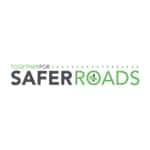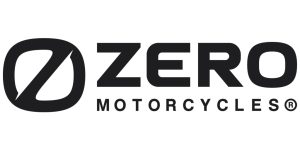BROOKLYN, N.Y.–(BUSINESS WIRE)–The global NGO Together for Safer Roads (TSR) announced today new progress to make direct vision cabs a reality for fleets across the United States. Through its Global Leadership Council for Fleet Safety, TSR is partnering with its members and the U.S. Department of Transportation’s Volpe Center to make direct vision cab design a fleet industry standard in the U.S. This will provide fleet managers and operators data and analysis on how safe – or dangerous – vehicles are in relation to driver blind zones, and allow for the implementation of appropriate upgrades.
A grant was awarded by The Santos Family Foundation to support TSR’s work to make direct vision cabs the industry standard for commercial trucks. Direct vision cabs reduce or completely eliminate driver blind zones, defined as when a driver has an obstructed view of the road and other vulnerable road users around them. Currently, the vast majority of commercial trucks available in the U.S. do not provide direct vision, despite estimates that one-quarter of the more than 500 pedestrian and bicyclist deaths each year that involve large trucks traveling at low speeds could be prevented by direct vision cabs.
The standard and certification are built on foundational research from the Volpe Center, whose mission it is to address the nation’s most pressing and complex transportation challenges, and will introduce new tools like the Volpe Center’s VIEW app, a smartphone app that professionals can use to measure blind zones on their fleet vehicles. The Santos Family Foundation has also provided grants to the Volpe Center to develop and refine applications that facilitate direct vision assessment for truck and large passenger vehicle cabs.
“The Santos Family Foundation grant is intended to facilitate the collaboration between TSR and the Volpe Center, and advance the development and deployment of improved direct vision cabs, making roads safer for all,” says Leonard E. Santos, Executive Director, Santos Family Foundation.
There is ample evidence that drivers who can see better from their cabs are less likely to injure or kill pedestrians and bicyclists. As part of the standard and certification development process, TSR and the Volpe Center will disseminate data and analysis to government rulemakers, automobile and truck manufacturers, fleet managers, and drivers to promote the need for direct vision cabs.
Although several vehicle manufacturers already sell direct vision cab designs in Europe, few are available to fleets in the U.S. or other parts of the world. TSR intends to show manufacturers the untapped potential for direct vision trucks in the U.S. market and beyond, with work already underway through a public-private partnership that includes organizations such as:
- The City of New York, which manages the largest sanitation department in the world and is committed to making direct vision trucks the standard;
- Republic Services (TSR-member), one of the largest waste management companies in the U.S., which is conducting research around changing their procurement specifications to require direct vision cabs; and
- The National Waste and Recycling Association (NWRA), which is actively participating in TSR-led discussions around direct vision.
TSR aims to make direct vision cab design the standard across all industries by showcasing the benefits of a direct vision standard and self-certification process. It hopes to change the paradigm to one where fleets compete on safety.
“We should no longer have to ask truck drivers how many road users can they see through their cab windows,” says Noah Budnick, Executive Director, TSR. “Truck drivers need a direct view of everyone using the roads – pedestrians, bicyclists, other drivers – everyone. It’s time for direct vision cab design.”
TSR is using its cutting-edge, tech-first approach to send a clear market signal to truck manufacturers that there is strong demand for direct vision cabs. It is raising awareness among fleet leaders that safer trucks exist by quantifying the visibility problems of trucks currently available in the U.S. and demonstrating the difference between high vision and low vision trucks. TSR and the Volpe Center are partnering to use the VIEW app to assess commercial trucks and create a database of vision ratings for dozens, if not hundreds, of models. Their effort will show fleet managers and operators how vehicle purchasing decisions benefit communities.
TSR plans to partner with fleet leaders to pilot the direct vision rating standards and initiate the self-certification process to demonstrate truck safety. Its goal is for fleets to make the standards and certification an industry best practice, with supporting research shared across public and private sector fleets to prove the benefits of direct vision.
About Together for Safer Roads
Together for Safer Roads (TSR) is a global NGO dedicated to equity and road safety, leveraging private-sector technology, data and expertise to prevent traffic crashes, injuries and fatalities around the world. TSR works with government, businesses and community stakeholders on local projects, fleet safety management and technology initiatives. TSR was started in conjunction with the UN’s Decade of Action for Road Safety and has partners around the world, including AB InBev, Anheuser-Busch, Autoliv, Geotab, Marsh, PepsiCo, Republic Services, Samsara, UPS, and many others.
Contacts
Media
Luke Gillespie
Luke@purposenorthamerica.com






















